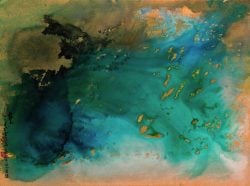The 4 Best Contemporary Chinese Artists and What You Can Learn From Their Work
Every time we see a Chinese painting or read a Chinese poem, we are struck by the overwhelming beauty and originality of Chinese art.
Even when we don’t fully understand what an artist is trying to convey, we just know that there is something profound and even mythical in their work.
Indeed, Chinese art comprises a set of ancient traditions and principles that strike us as both beautiful and odd, even in its contemporary forms.
What makes the work of modern Chinese artists incomparable is not only its technical complexity but the fact that it presents us with a different way of experiencing the world.
For this reason, we have decided to make a list of some of the most inspiring contemporary Chinese artists that every Chinese learner should check out.
Explore our Chinese courses with qualified native speakers in your city or online!
1. Zhang Daqian: the Chinese Picasso

Photo via Flickr
Born in the province of Sichuan in 1899, Zhang Daqian started training in the classical Chinese ink style when he was only a child. His art was heavily influenced by classical Asian art, especially painters like Bada Shanren and Dunhuang’s breathtaking cave frescoes.
During his travels around South and North America, he got in touch with other great masters of the 20th century such as Picasso, which partly accounts for the eclectic nature of his work, easily one of the most stylistically and thematically varied in contemporary art.
Like many important Chinese artists before him, Zhang Daqian made good copies of some of his early masterpieces, some of which are said to have entered important art gallery collections as genuine paintings, the only controversy from an artist whose life was as calm and clean as his beautiful landscapes.
Would you like to learn Chinese (and ink painting!) with Zhang Daqian? Then watch this unmissable masterclass where he paints ink-splashed mountains amid the clouds LIVE!
2. Xiaoxiao Xu – An Eye-Opening Journey Through Everyday Life
If you want to get a sense of what Chinese culture is really like, you have to explore the work of the most renowned Chinese artists, and particularly, of great contemporary photographers.
Xiaoxiao Xu immigrated from China to the Netherlands when she was a teenager. The leap from her Eastern origin to life in the West had a profound effect on her both as a person and as an artist.
When she returned to China as an adult, she was able to observe its people and traditions with a sense of both familiarity and otherness. Xu became a photographer so she could express her feelings about her motherland and tell stories with pictures. By photographing objects, people and street life, this amazing photographer achieves a rare balance between objectivity, identity and emotion.
If you want to learn more about Xiaoxiao Xu’s work (and about Chinese culture and places), you can get her incredible book Watering My Horse By A Spring At The Foot Of The Long Wall, which is the result of a 25,000-kilometre journey to document the lives of people living along the Great Wall of China.
3. Ang Lee – Chinese Sense, American Sensibility
Ang Lee is one of the most celebrated Chinese artists of the 20th-21st century. He has produced and directed many award-winning films such as Sense & Sensibility (1995), Crouching Tiger, Hidden Dragon (2000), Brokeback Mountain (2006) and Life of Pi (2012), the first family-oriented film to receive an Oscar for Best Director since 1969.
Whether he is directing a Chinese epic war film, a romance, or a family film, what sets Lee’s work apart is his interest in modern issues such as cultural differences, gender politics, and sexual diversity.
Even when he’s (skillfully) directing CGI action scenes, he never loses sight of the characters’ internal struggles, whether they are questioning their own identity or the role they play within their family or their society.
While Ang Lee has developed most of his career in Hollywood, he still remains one of the most cherished Chinese artists out there. Do you want to learn Chinese by seeing Lee’s work? Then watch Crouching Tiger, Hidden Dragon on Netflix in its original language!
4. The May Fourth Movement – A New Chinese Poetic Identity
It may be hard to believe this, but before 1917, vernacular Chinese wasn’t accepted as a legitimate literary language. At least, not when it came to poetry. With the May Fourth Movement (1917-1921), an era started in China in which poets joined in an outpouring of poetry written in free verse. This new poetry, made from “plain speech” by usually young Chinese artists, contrasted with the traditional, elitist poetry of Imperial China.
One century later, these ‘new’ poetic voices have continued to blossom in anthologies, poetry journals and, of course, on the Internet.
A great example is 21st Century Chinese Poetry 《廿一世纪中国诗歌》, an independent journal committed to serving as a platform for inspiring contemporary Chinese poets.
Visit their website and read the beautiful poem “Electricity,” by Cao Seng
Do you like learning languages through art and literature? Then you can also read and listen to this wonderful poem both in Chinese and in English.
It’s clear that Chinese artists have a lot to teach us, not only about their language and culture but about how they see the world.
Do you want to delve deeper into the Chinese language and culture? Then, what better than taking classes with a qualified native speaker born and raised in China? Get in touch with us so we can prepare a tailor-made course for you, adapted to your needs and interests. Best of all, you can take it online, at home, or anywhere you like in your own city! Explore our Chinese courses and take your language skills to the next level.
Explore our Chinese courses with qualified native speakers in your city or online!
